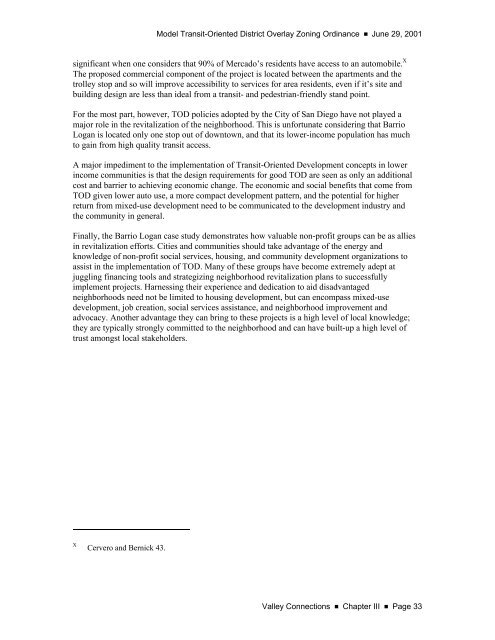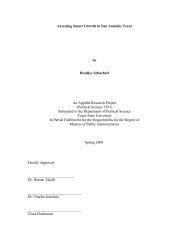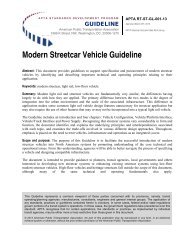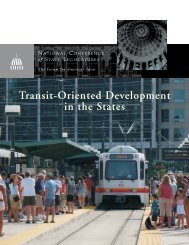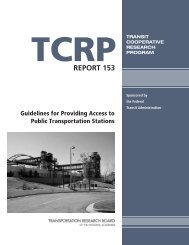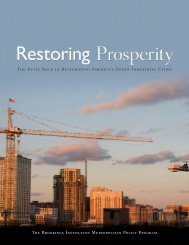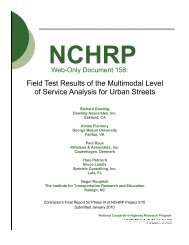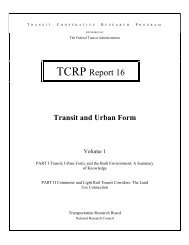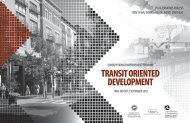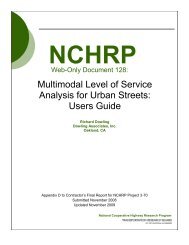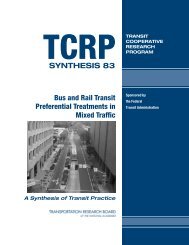Model TOD Zoning Ordinance (PDF, 3.7 MB) - Reconnecting America
Model TOD Zoning Ordinance (PDF, 3.7 MB) - Reconnecting America
Model TOD Zoning Ordinance (PDF, 3.7 MB) - Reconnecting America
Create successful ePaper yourself
Turn your PDF publications into a flip-book with our unique Google optimized e-Paper software.
<strong>Model</strong> Transit-Oriented District Overlay <strong>Zoning</strong> <strong>Ordinance</strong> ■ June 29, 2001significant when one considers that 90% of Mercado’s residents have access to an automobile. XThe proposed commercial component of the project is located between the apartments and thetrolley stop and so will improve accessibility to services for area residents, even if it’s site andbuilding design are less than ideal from a transit- and pedestrian-friendly stand point.For the most part, however, <strong>TOD</strong> policies adopted by the City of San Diego have not played amajor role in the revitalization of the neighborhood. This is unfortunate considering that BarrioLogan is located only one stop out of downtown, and that its lower-income population has muchto gain from high quality transit access.A major impediment to the implementation of Transit-Oriented Development concepts in lowerincome communities is that the design requirements for good <strong>TOD</strong> are seen as only an additionalcost and barrier to achieving economic change. The economic and social benefits that come from<strong>TOD</strong> given lower auto use, a more compact development pattern, and the potential for higherreturn from mixed-use development need to be communicated to the development industry andthe community in general.Finally, the Barrio Logan case study demonstrates how valuable non-profit groups can be as alliesin revitalization efforts. Cities and communities should take advantage of the energy andknowledge of non-profit social services, housing, and community development organizations toassist in the implementation of <strong>TOD</strong>. Many of these groups have become extremely adept atjuggling financing tools and strategizing neighborhood revitalization plans to successfullyimplement projects. Harnessing their experience and dedication to aid disadvantagedneighborhoods need not be limited to housing development, but can encompass mixed-usedevelopment, job creation, social services assistance, and neighborhood improvement andadvocacy. Another advantage they can bring to these projects is a high level of local knowledge;they are typically strongly committed to the neighborhood and can have built-up a high level oftrust amongst local stakeholders.XCervero and Bernick 43.Valley Connections ■ Chapter III ■ Page 33


